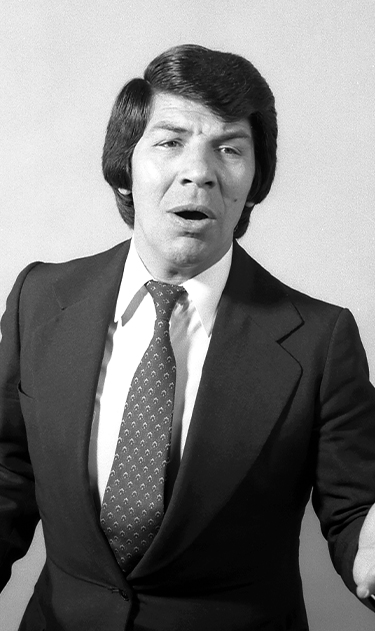Alonso Núñez Núñez is one of the most important flamenco artists of the last third of the 20th century and the early 21st century. He was born in 1945 in Chiclana de la Frontera, where he soon came to be known by his stage name, ‘Rancapino’.
Of gypsy heritage, he was born into a family with a long tradition of producing flamenco performers. His grandmother was Antonia García Moreno, a cantaora (flamenco singer) from El Puerto de Santa María, better known as ‘Tía Antonia La Obispa’. His father’s brother was the cantaor Orillo del Puerto, and his father, Manuel Núñez Núñez, was known as ‘Orillito’.
Rancapino began as a cantaor during his childhood, performing at gatherings, in local ventas (bars and restaurants), in Miguel Pérez’s barbershop and even, according to legend, on trams. During that time, he forged his close friendship with José Monge ‘Camarón de la Isla’, with whom he shared some of those adventures and unscheduled performances at the Venta de Vargas or at Seville’s Feria (annual spring fair). Sometimes, for fun, the two of them imitated the great figures of their time.
Rancapino and Camarón were actually first cousins on their mother’s side through Juana, Camarón’s mother, the sister of Rancapino’s mother. Rancapino was four years older than Camarón, who used to call him ‘El Viejo’ (Old Man).
During his youth he frequented tablaos in Madrid and Andalusia and took part in several tours in European and African countries, as well as in the United States and Japan, participating in occasional recordings by flamenco artists from the latter country.
Rancapino’s style is based on family tradition and the preferences of the time, with influences ranging from Manolo Caracol to Aurelio Sellés, although his personal artistic pantheon also includes ‘La Perla de Cádiz’ and ‘Manolito el de María’… and, of course, Camarón himself.
In the opinion of journalist and flamenco music critic Alfredo Grimaldos, Rancapino’s singing “wisely avoids strident shouting and is capable of gently carrying the aficionado between the tragic complaint of the seguiriya and the sprightly sweetness of the alegrías de Cádiz, so influenced by the salty air of his native saltmarsh landscape”.
Alonso Núñez has given us some critically acclaimed recordings together with some legendary moments in the history of flamenco singing, such as when he won the 1977 Enrique El Mellizo Award at the National Flamenco Arts Award in Córdoba. He has also won many other awards, such as the prestigious Lucas López Award fromPeña El Taranto in Almería. These awards made him an obligatory presence at flamenco festivals, becoming an icon in Madrid, winning support at a critical moment in his career.
Critics say Rancapino’s singing stands out due to his exquisite sense of rhythm in seguiriyas, soleares and malagueñas, among other styles. His recording debut took place in 1972, with an album released by BMG in which he was accompanied by the guitar of Jerez’s Paco Cepero. His performances of alegrías, tangos, tientos, soleares, fandangos, malagueñas del Mellizo, mineras, seguiriyas, soleares and bulerías were impressive.
After a long absence from the labels, he recorded another album with Turner Records in 1995. This work was an implicit tribute to Aurelio El Tuerto, whose malagueñas and alegrías he sang, and to Manolo Caracol, covering his fandangos caracoleros and zambra, which went on to become classics in his stage repertoire. In this work, whose cover art was designed by Miquel Barceló, he was accompanied once again by Paco Cepero’s guitar, and he performed tangos, fandangos, seguiriyas, bulerías, soleares and martinetes.
His discography is extremely limited but it also includes the CD included with the book Ronco de andar descalzo, his biography, written by Pedro Antonio Quiñones Grimaldi in 2011. The title alludes to one of Alonso’s recurring phrases: “My singing voice is hoarse from so much walking barefoot as a child.”
In 1995, he accompanied Chavela Vargas and Joaquín Sabina, among other artists, on a tour of Mexico. On 17 November 2006, a tribute was paid to him at the Lope de Vega Theater in Seville, organized by Miguel Poveda and attended by numerous artists, such as Arcángel, and Rancapino’s son Alonso. In 2021, the Chiclana City Council paid a similar tribute to him for his 75th birthday.
In recent years, his son Alonso has come to be recognized as an exceptional cantaor performing as ‘Rancapino Chico’. His daughter Ana and his granddaughter Esmeralda Rancapino have also demonstrated their flair for flamenco.
